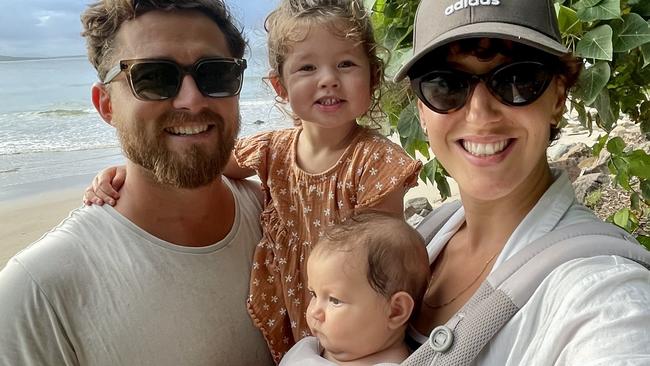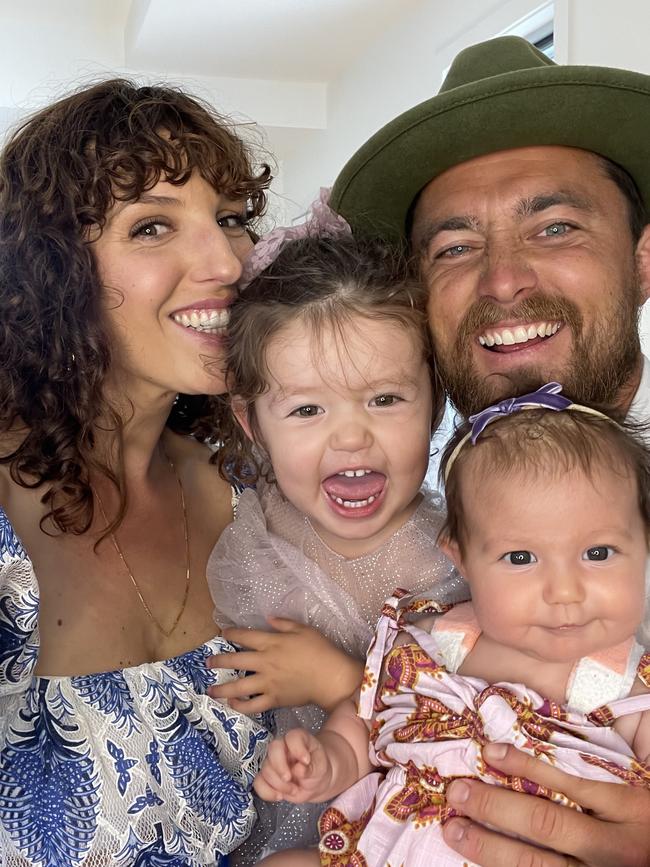Child care crisis: How three families were affected in the wait for one place in Port Stephens
As the Pincovais waited for a child care place to open up for two-year-old Esmeralda, three families had to take on the burden just so her mum could go back to work.
Newcastle
Don't miss out on the headlines from Newcastle. Followed categories will be added to My News.
When Samantha Pincovai couldn’t get her daughter into child care, the flow-on affected not just her little family, but her extended relatives.
The Port Stephens mother-of-two works in Sydney and needed her retired mother to travel with her so two-year-old Esmeralda could be cared for while her mum was at work.
“Not only was it a burden on [husband Aramis and myself], it meant my mother had to stop living her life just so I could go back to work,” Samantha said.
“Thankfully she is retired but she also looked after my sister’s children and so it not only interfered with my mother’s life but also my sister’s family.
“There is definitely a shortage of places in Australia, especially regional Australia.

“I just don’t feel there is enough support or places for people in positions like us.”
Samantha said Esmeralda spent 12 months on a waiting list before getting a place at the start of this year.
Her six-month-old, Genevieve, is already on a waiting list.
The Pincovais predicament is a snapshot of the significant issues relating to child care places across the country, with a report from Victoria University affiliated Mitchell Institute revealed that some three million people in NSW are living in what it qualifies as ‘childcare deserts’, which are places where there are more than three kids for every childcare place available.
The geographical divide is stark, with suburbs in the inner city having a range of childcare options, while parents in the southwest and western suburbs, along with regional NSW, have to compete for very few places.
The report’s lead author, Dr Peter Hurley, argues that the privatised childcare sector isn’t opening centres where the demand is highest, but where the owners can charge the highest fees.

“Our research shows that the most expensive childcare in Australian cities are also in suburbs with more childcare places, suggesting there is an incentive for providers to open in wealthier areas where families can afford to pay higher fees,” Dr Hurley said.
The figures show for every child in daycare in Port Stephens, there are 2.72 children.
The Upper Hunter (5.39 children to every place) and Lower Hunter (3.15 children) also report high levels, with Newcastle (1.98) and Maitland (1.83) relatively lower.
Salamander Child Care Centre director Daniel Freeman said long waiting times, especially for children under two, had remained throughout the pandemic.
“I think we had a lot of people, a lot of younger families, who have relocated during Covid and who probably thought it could be easy to get a place outside of Sydney,” Mr Freeman said.
“But a lot of the centres up here are small centres and there is not a lot of movement.
“We have 80 places all up here and only cater for about a maximum of 20 for under-twos.
“So for those who don’t wish to compromise the quality can be up for a significant wait for a place.’’



